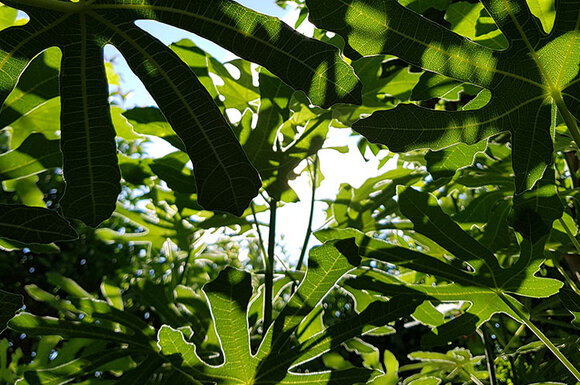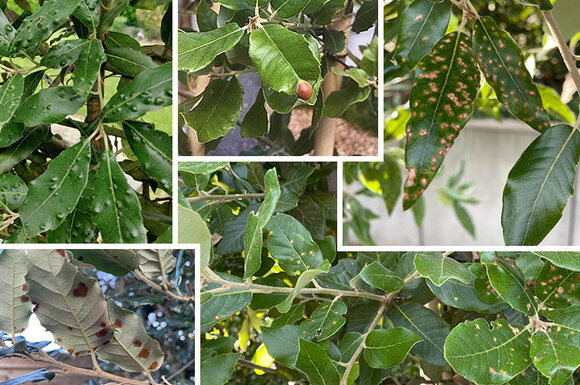Pruning in Spring (April)
During the early years, focus mainly on shaping the fig tree. Through pruning, you create an open structure that allows maximum light and warmth to reach the branches. This type of pruning should be done in spring, around April.
Remove branches that rub against each other or cross. Also prune those that grow too vertically. Personally, I always consider the weather and the moon phase. If the fig starts to bleed during pruning, it’s best to wait a few days. A dry eastern wind and a waning moon are the most ideal conditions.
Pruning in Summer (late July)
In the next phase, during summer, assess which branches produce the least. These are usually vertical branches with just a few figs at the tips. It's best to mark them so you can remove them in winter.
Also, selectively remove some five-leaf shoots at the ends of branches. This summer pruning is important: too much vegetative growth can make the fig tree uncontrollable and overly vigorous.
Autumn and Winter Pruning (starting in October)
In autumn, cut away dried-out branches—you’ll notice that the fig sometimes sheds a few itself. Sometimes this is already visible in summer. In fact, dried branches can be removed at any time.
Maintenance Pruning for Older Trees
The fig is a fruit tree. On older specimens, it may be necessary to step in occasionally to maintain the crown’s shape, keep it open, or remove tight or interfering branches.
More intensive pruning is best done in autumn and winter. However, removing a few branches can be done year-round, including in spring and summer.
How to Know if Figs Are Ripe
When the stem starts to droop, when the fig turns purplish, or when a sweet drop appears at the bottom—it’s ready for harvest.


